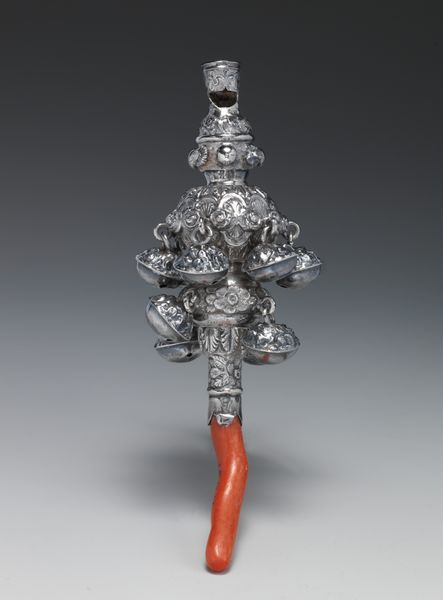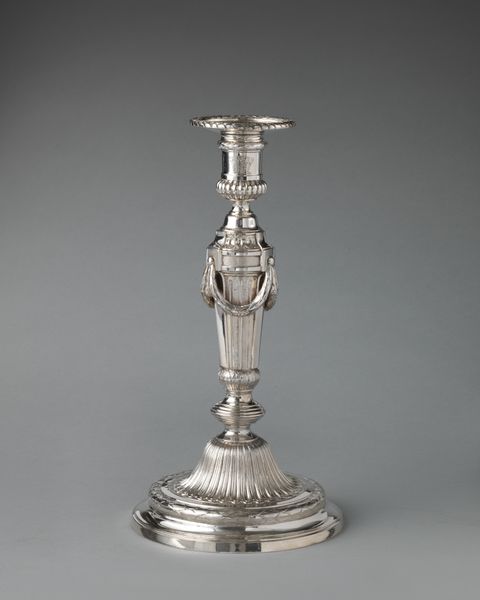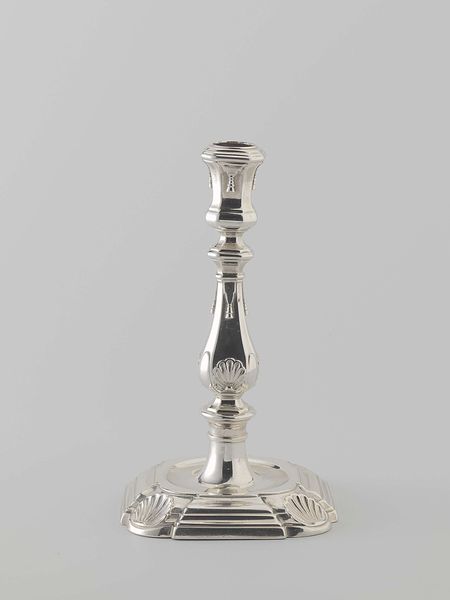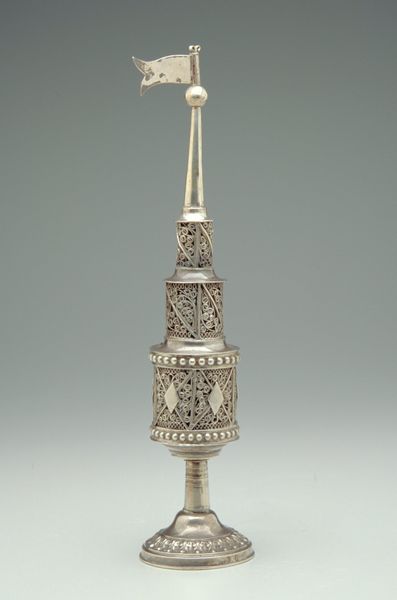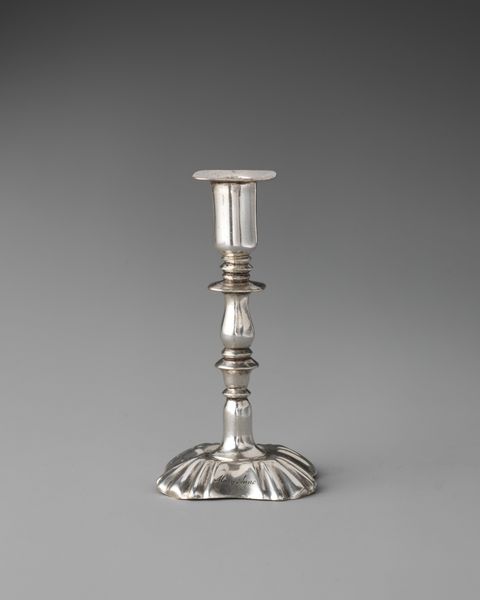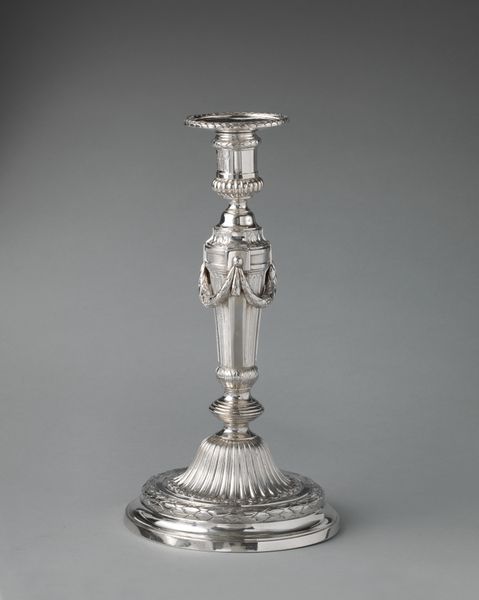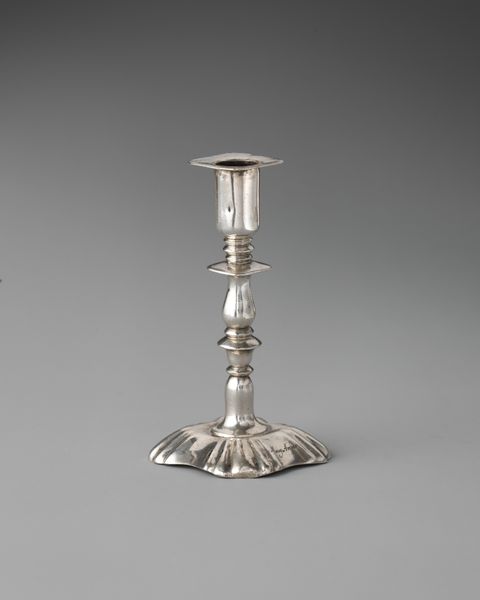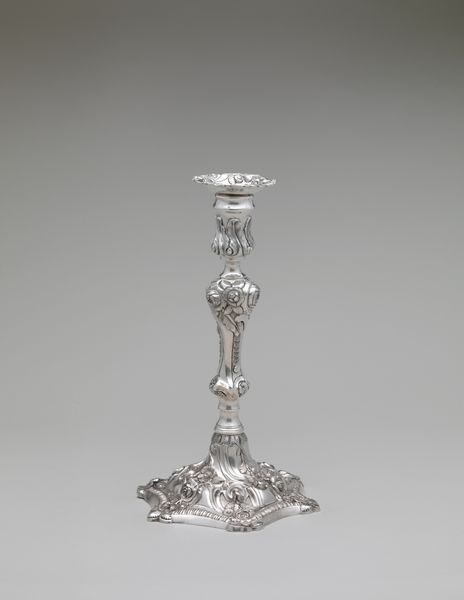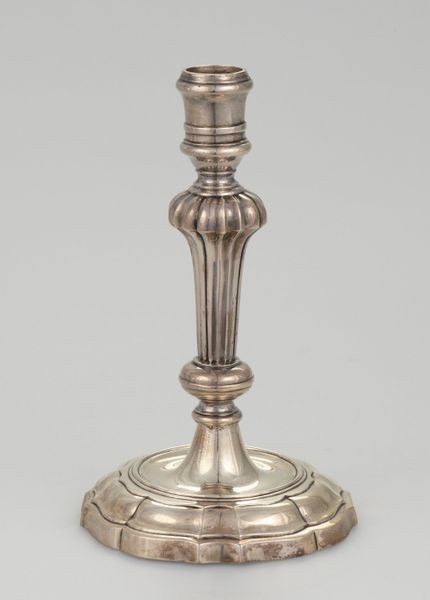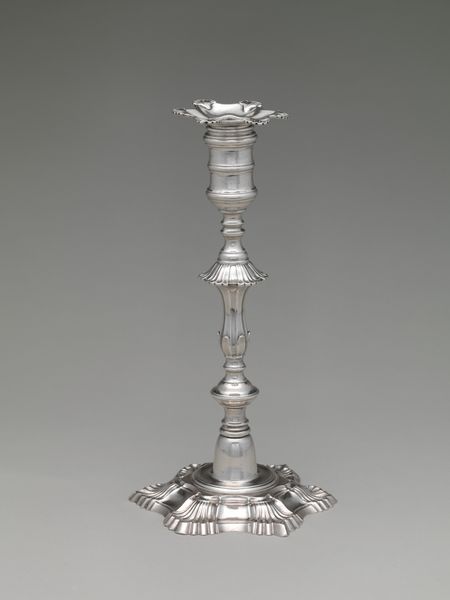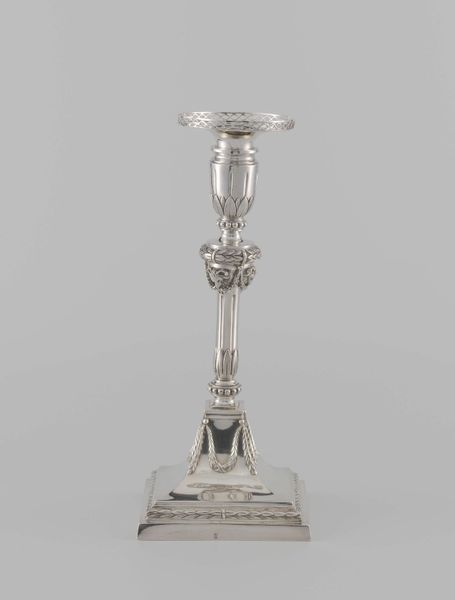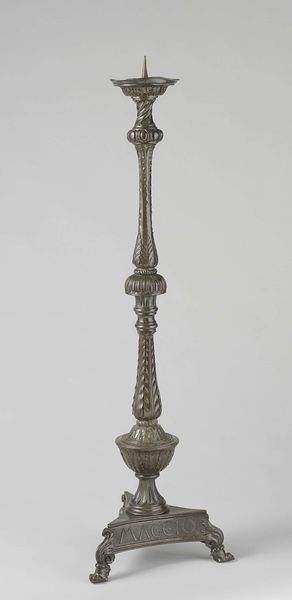
carving, silver, ceramic, sculpture
#
carving
#
silver
#
baroque
#
ceramic
#
sculpture
Dimensions: 6 1/4 in. (15.9 cm); 2 oz. 15 dwt. (85 g)
Copyright: Public Domain
Curator: Looking at this Baroque-era object, titled "Rattle, Whistle, and Bells," made between 1735 and 1745 by silversmith Richard Van Dyck, one is struck by the care put into crafting an object for a child. Editor: It’s incredibly tactile. The cool gleam of the silver contrasting with what appears to be the warm, coral handle, those little dangling bells. I can almost hear it, see a child's hand grasping and shaking it. It screams luxury, but on an intimate scale. Curator: Absolutely. Silver work during this period, especially objects made for the rising merchant class, played a crucial role in signifying status. Silver wasn't just decorative; it was a tangible symbol of economic and social ascendancy. And to provide a child with an object crafted with this much precision broadcasts family position. Editor: It makes you consider the labor involved. Not only the silversmith, but who harvested the coral and under what conditions? This seemingly simple object really encapsulates so much about material origins, production methods, and how those intersected with social class. Curator: And, of course, the very commissioning of such an object. Think of the patronage system at work; Van Dyck likely belonged to a guild and produced objects to signify wealth for this elite sphere of Dutch society. It's interesting, isn't it, how these intimate objects became tied up in displays of societal power? Editor: Definitely, it invites us to reflect on value beyond mere aesthetics. What statements were crafted when gifting and receiving? That vibrant coral, it makes me consider global trade and raw material extraction as critical, albeit easily overlooked aspects of art history. It’s more than pretty—it tells a story of acquisition and transformation. Curator: It’s a microcosm of 18th-century social dynamics; how the art and objects we create—or consume—reflect and, at times, enforce the ideologies of the world around us. Editor: A shiny reminder that even the simplest objects have complicated lives and connections to larger systems.
Comments
No comments
Be the first to comment and join the conversation on the ultimate creative platform.
